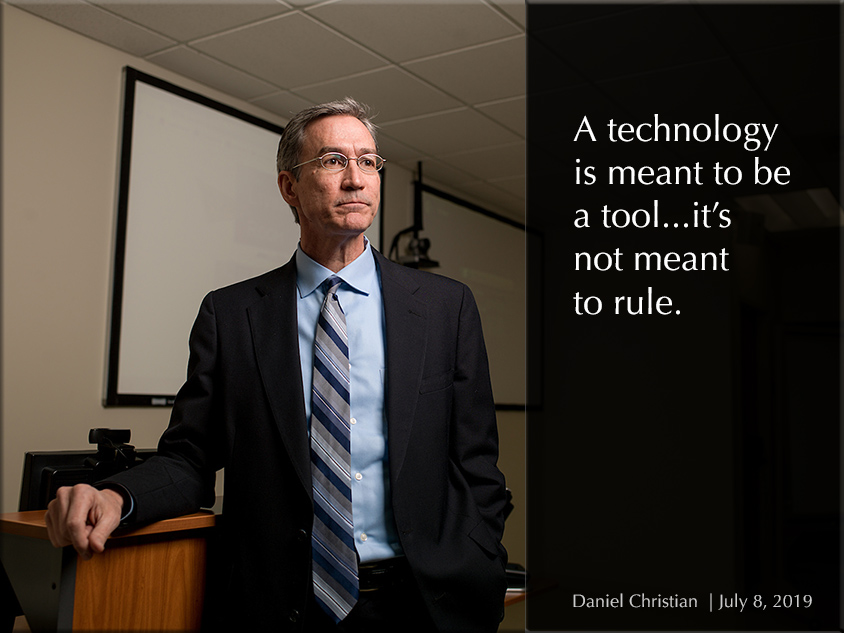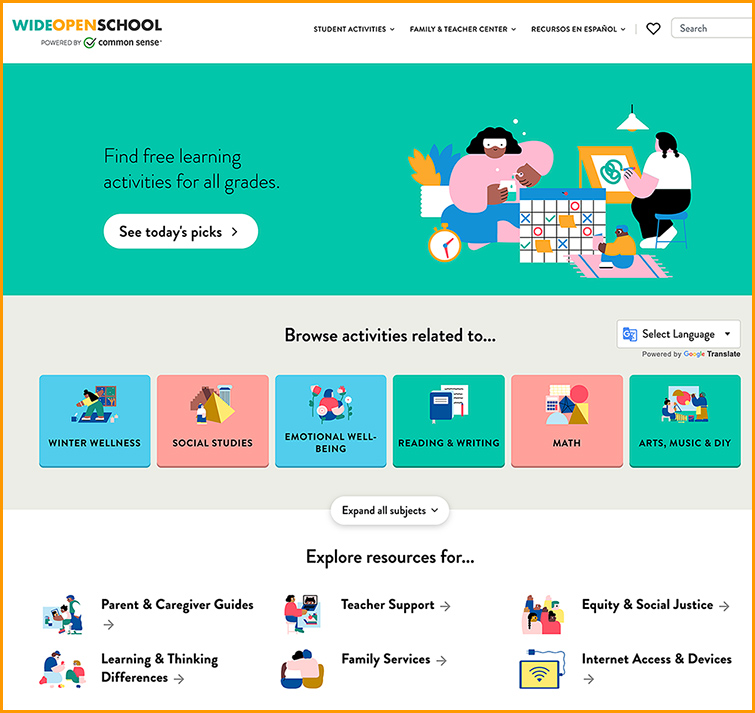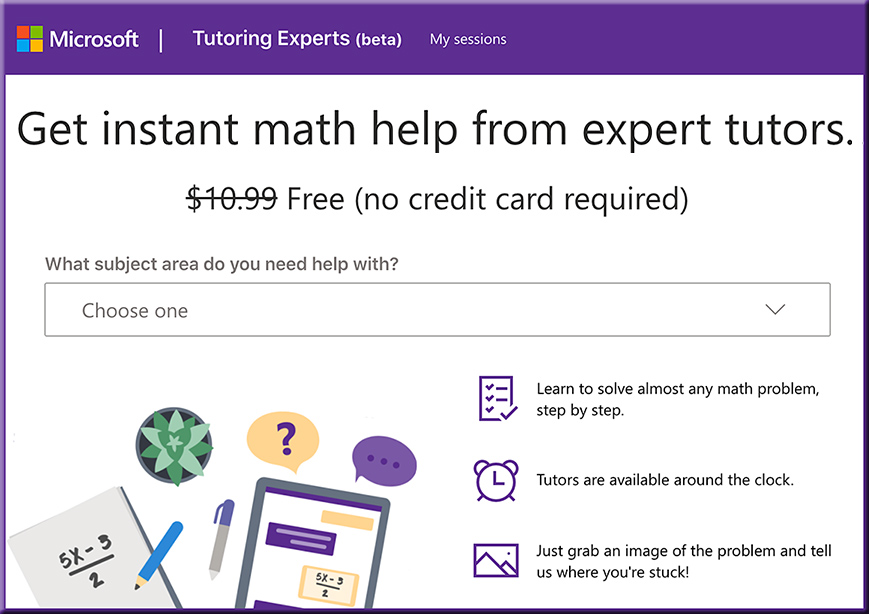Want Students to Be More Creative? Try Adding More Play. — from spencerauthor.com by John Spencer
How to become a livestreaming teacher — from innovatemyschool.com by Bobbie Grennier
Excerpts:
What is an encoder?
The format that a video camera records content in has to be transcoded so that it can be livestreamed to a destination like Facebook Live, YouTube, Twitch and Periscope. This is accomplished using an encoder software. An encoder optimizes the video feed for the streaming platform. The key to using an encoder is to learn to set-up scenes.
From DSC:
It will be interesting to see how learning-related platforms develop in the future. I’m continually on the lookout for innovative ideas across the learning landscapes, especially due to the Learning from the Living [Class] Room vision that I’ve been tracking this last decade. The pieces continue to come together. This might be another piece to that puzzle.
An online-based teaching and learning marketplace — backed up by AI, cloud-based learning profiles, voice-driven interfaces, learning agents, and more. Feeds/streams of content into how to learn about any topic…supporting communities of practice as well as individuals. And people will be key in this platform — technology will serve the people, not the other way around.

Don’t force square-peg students back into wrong-shaped holes — from crpe.org by Robin Lake Paul Hill
But what gets lost in the reopening debate is the growing evidence that a significant portion of students and their families are actually happier and learn better outside of traditional schooling.
Excerpt:
Some of the “square-peg” children are the most creative and bright students in their class, but had struggled academically or socially in the traditional classroom. According to informal surveys of parents and teachers, new approaches to learning are benefiting:
- Students with special needs, like ADHD or autism, who focus better on learning without disruptions from other kids, and who—when learning from home—can take breaks and calm themselves when needed, not just when the classroom schedule permits.
- Students who didn’t speak up or ask questions in regular classrooms for fear of being mocked, but are now able to send private questions to teachers or make written contributions.
- Socially-awkward or otherwise different kids who experienced bullying.
- Kids who best learn from small-group instruction.
- Students who have mastered all the regular class material and are motivated to learn advanced materials and explore on their own.
- Students who learn best by hearing about a new idea and then quickly practicing or applying it on their own.
From DSC:
One of our daughters needs a team of people around her to help her learn and grow. The one-size-fits-all, the-train-stops-for-no-one type of educational system that she often encountered did not work well for her.

Homeschooling has seen her grow a lot more. She even has her own blog now — and she’s excited about it! She loves reading and writing — and she’s very creative (albeit her writing gets pretty dark at times. But come to think of it…my second-grade teacher thought that my friend Andrew’s and my 38-page book with vampires, witches, and werewolves was pretty morbid too!)
An important distance learning resource for teachers, students, & parents — from educatorstechnology.com
Excerpt:
Also see:
Jeff Bezos Wants to Go to the Moon. Then, Public Education. — from edsurge.com by Dominik Dresel
Excerpts:
Jeff Bezos’ $2 billion investment to establish a Montessori-inspired network of preschools may be shrugged off by many as the world’s richest man dabbling in another playground. Instead, we should see it for what it is: the early days of Amazon’s foray into public education.
…
It would be easy to think that Amazon’s rapid expansion into industry after industry is just the natural, opportunistic path of a cash-flush company seeking to invest in new, lucrative markets. But Jeff Bezos, himself a graduate of a Montessori preschool, doesn’t think in short-term opportunities.
Yet, the world has had its first taste of the disentanglement of schooling from school buildings. Even though in 20 years we will still have school buildings—much like we still have bookstores—there is little doubt that the future will see more, not less, online instruction and content delivery.
A Strategic Roadmap for The Next Decade — from evolllution.com by Rob Westervelt
Excerpts:
- Get obsessed with your learner
- Adopt more than one model
- Align with partners
- Create lifelong learning models
- Build the system of the future
2020 ties for hottest year on record, says NASA and NOAA — from bigthink.com by Kevin Dickinson
In a joint briefing at the 101st American Meteorological Society Annual Meeting, NASA and NOAA revealed 2020’s scorching climate data.
Excerpts:
- 2020 is tied with 2016 for being globally the hottest year on record.
- The year’s hotspot included the Arctic, which is warming at three times the global mean.
- The United States endured a record-breaking year for billion-dollar natural disasters.
Microsoft Education offers a free tutoring service to help students with their math problems — from educatorstechnology.com
Excerpt:
In today’s post I want to bring to your attention this interesting math resource from Microsoft Education called Tutoring Experts. As its name indicates, Tutoring Experts allows students to seek help with their math problems from tutors that are available 24/7.
Also see:
From DSC:
One wonders if there aren’t some opportunities here for more online-based tutoring services. Perhaps graduates from schools of education will move more towards this type of thing…
Perhaps the online-based materials in the future will have a question mark “?” icon that instantly connects to that service’s teachers, professors, trainers, pastors, and/or other SMEs. Or perhaps this type of thing is already there…I’m not sure.
Best Online Educational Games for High School Students — from edtechreview.in by Saniya Khan
Excerpt:
…the introduction of educational games to kids helps increase their motivation and engagement, enhance visual skills, improve students’ interaction and collaboration abilities with their peers, and apply gaming values in a real-world situation; most importantly, it improves learning.
Learning Apps For Kids To Explore in 2021 — from edtechreview.in by Priyanka Gupta
Excerpt:
Living in a digital era and in times when technology has kept education going, let’s look at some promising learning apps for kids to explore in 2021.
3 Main Changes to Help Fill College Classrooms — from fierceeducation.com by Alison Diana
Excerpt:
Reducing Tuition:
Southern New Hampshire University last month announced it will cut the cost of its Fall 2021 campus-based programs to $15,000 or $10,000 per year and use “an increased focus on experiential and project-based learning; a new and more transparent financial aid process, shifting from merit-based to need-based financial aid awards to level the playing field for all students.”
This marks more than a 50% reduction of its fees, according to SNHU. The university also plans to increase its on-site campus enrollment to 4,500 students from 3,000, although it did not say how or if it expects to adapt faculty or administrative staffing.
SNHU is not alone in addressing tuition to encourage people to attend their schools.
From DSC:
Videoconferencing vendors out there:
- Have you done any focus group tests — especially within education — with audio-based or digital video-based versions of emoticons?
. - So instead of clicking on an emoticon as feedback, one could also have some sound effects or movie clips to choose from as well!
.

I’m thinking here of things like DJ’s might have at their disposal. For example, someone tells a bad joke and you hear the drummer in the background:
Or a team loses the spelling-bee word, and hears:
Or a professor wants to get the classes attention as they start their 6pm class:
I realize this could backfire big time…so it would have to be an optional feature that a teacher, professor, trainer, pastor, or a presenter could turn on and off. (Could be fun for podcasters too!)
It seems to me that this could take
engagement to a whole new level!
College & Career Guide for Students with Disabilities — from study.com
College students with disabilities have rights that allow for specific accommodations to help them succeed in school. Learn about legal protections, scholarships, technologies, and other assistance available to students with disabilities.
Teaching: Giving Students Better Information Before They Sign Up for Class — from chronicle.com by Beth McMurtrie
Excerpt:
A New Tool for Course Transparency
The days when students flipped through course catalogues to determine what they wanted to study are long over. So why do so many colleges continue to provide students only brief course descriptions on which to base their enrollment decisions? Couldn’t those descriptions be much more expansive online, including course-material costs, a syllabus, and even a professor’s statement of their teaching philosophy?
Why?
Particularly now, students require information about classes as they plan their upcoming semester to find the best fit for their learning. Course descriptions rarely provide all the information students seek around class structure, attendance, cost, and more. Completing this not only serves as a communication mechanism for prospective students, it may reduce the number of emails and drop/adds to your course. (source)
Best Headphones for Students in Remote Learning — from techlearning.com by Luke Edwards
Get the best headphones for students to hear and be heard in remote learning
Excerpts:
- Sony WH-1000XM4: Best headphones overall for students
- Plantronics BackBeat Go 810: Best affordable wireless headphones for students










